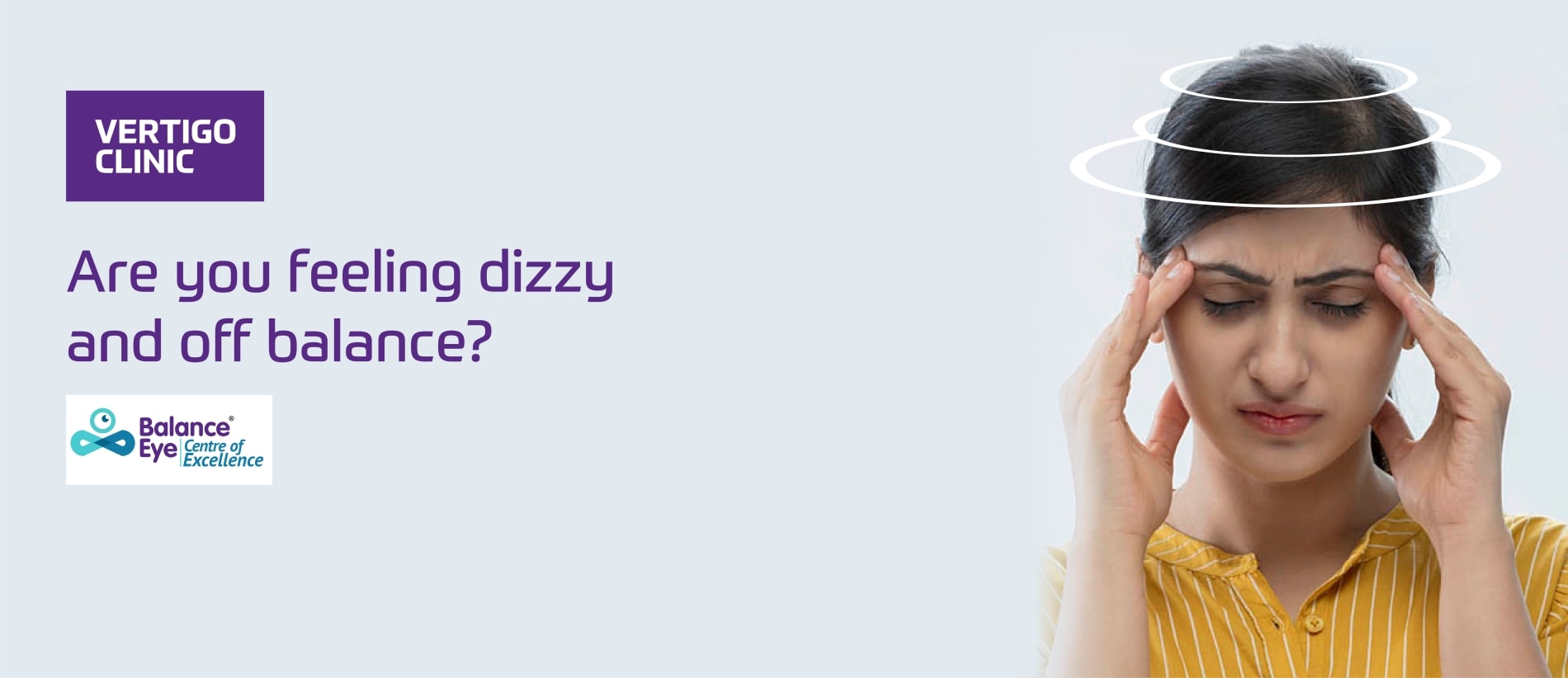
Vestibular disorders and it’s prevalence
Dizziness and balance disorders can be a constant irritant, debilitating you from effectively performing your day to day chores. Dizziness is just a symptom. The root cause can be in the ear (peripheral) or the brain and brain stem (central). Timely diagnosis of the root cause of dizziness is necessary for effective treatment and early detection of complex conditions like cerebellar stroke, blockages etc.
Causes of dizziness and balance disorders
Dizziness, vertigo and disequilibrium are common symptoms reported by adults during visits to their doctors. They are all symptoms that can result from a peripheral vestibular disorder (a dysfunction of the balance organs of the inner ear) or central vestibular disorder (a dysfunction of one or more parts of the central nervous system that help process balance and spatial information). Although these three symptoms can be linked by a common cause, they have different meanings, and describing them accurately can mean the difference between a successful diagnosis and one that is missed.
Some of the prominent causes of dizziness and balance disorders are:
- Head injuries
- Displacement of inner ear crystals
- Tumours in the ear / brain
- Stroke
- Aging
- Viral / bacterial infection
- Long term use of certain medications
- Restricted blood flow in the inner ear / brain
- Migraine
Symptoms
The vestibular system includes the parts of the inner ear and brain that help control balance and eye movements. If the system is damaged by disease, aging, or injury, vestibular disorders can result, and are often associated with one or more of these symptoms, among others:
- Imbalance or unsteady gait
- Vertigo
- Fear of heights
- Fear of narrow alley or confined environment
- Dizziness
- Blurred vision
- Nausea
- Fear of falling
- Fear of crowded places
- Changes in hearing pattern
The type and severity of vestibular disorder symptoms can vary considerably, and be frightening and difficult to describe. People affected by vestibular disorders may be perceived as inattentive, lazy, overly anxious, or seeking attention. Functioning at work or school, performing routine daily tasks, or just getting out of bed in the morning may be difficult.
Diagnosis
Most of the vestibular disorders can be fully treated. For effective and conclusive treatment, It’s important to diagnose the root cause of dizziness and balance disorders. The BalanceEye Centre of Excellence for Vestibular Disorders at Yenepoya Speciality Hospital is a well equipped centre that can diagnose majority of the causes of dizziness and balance disorders. Below is our 10 step approach aimed towards comprehensive assessment and conclusive treatment.
Step 1 – Patient registration
Step 2 – Consultation and patient history
Step 3 – Physical / medical examination
Step 4 – Oculomotor tests on BalanceEye for assessing central pathways (brain)
Step 5 – Nystagmus and positional tests on BalanceEye for assessing peripheral pathways
Step 6 – Subjective tests on BalanceEye for assessing peripheral pathways
Step 7 – Video head impulse test (vHIT) on BalanceEye for assessing vestibular ocular reflex
Step 8 – Data review and clinical interpretation by BalanceEye reporting team
Step 9 – Report generation
Step 10 – Consultation and treatment planning
Step 11 – Treatment
Treatment
Dizziness and balance disorders can be treated effectively with any one or a combination of more than one of the below options:
- Medication
- Re positioning manoeuvres
- Vestibular rehabilitation therapy
- Surgery in remote cases
- Diet and lifestyle changes
